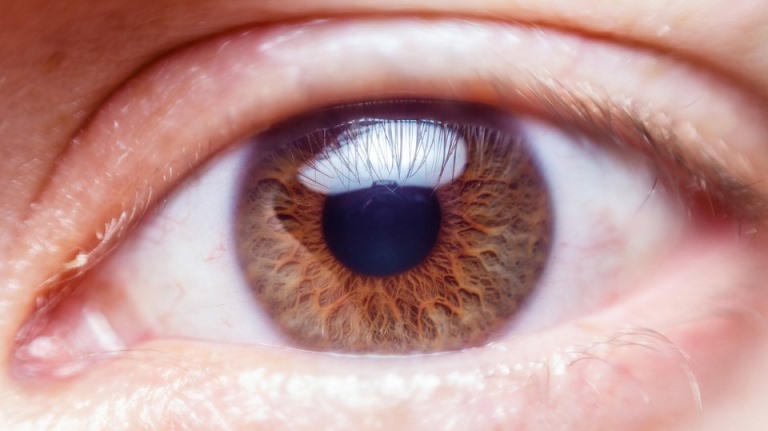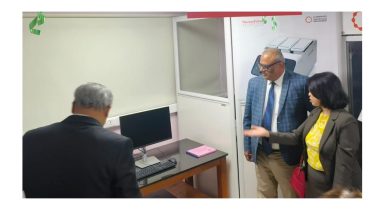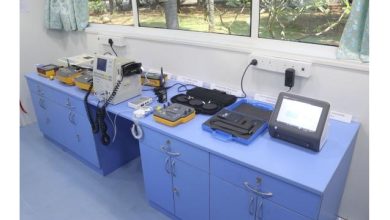Effectiveness of Aflibercept as Monotherapy in Polypoidal Choroidal Vasculopathy (PCV) Demonstrated

Bayer recently announced that its anti-VEGF treatment aflibercept solution for injection into the eye is effective as monotherapy in patients who have Polypoidal Choroidal Vasculopathy (PCV), a subtype of wet age-related macular degeneration (wet AMD), most prevalent in Asian populations. This important finding was from the PLANET study[i], a key clinical trial in PCV conducted mainly in Asia Pacific i.e. Australia, Japan, Hong Kong, Singapore, South Korea, and Taiwan. The study compared the efficacy and safety of aflibercept monotherapy (where patients received sham rescue PDT) to aflibercept plus active rescue PDT in patients with PCV.
The completed PLANET study shows that aflibercept improved vision in PCV patients without the need for PDT (laser eye therapy) with verteporfin. The full results at 96 weeks demonstrate that aflibercept monotherapy was non-inferior in mean improvement of best-corrected visual acuity (BCVA) as compared to aflibercept plus active rescue PDT. Patients receiving aflibercept monotherapy achieved a mean +10.7 letter improvement from baseline as compared to a mean +9.1 letter improvement from baseline in those receiving aflibercept plus active rescue PDT (n=318; 95% CI -1.7, 3.6, 5-letter NI[1] margin)i.
Professor Tien Yin Wong, principal investigator of the PLANET study and retinal specialist at Singapore National Eye Centre, said, “Wet AMD is a leading cause of blindness globally and many Asian patients tend to have PCV. Over the two years of the PLANET study, the anti-VEGF agent aflibercept given as a monotherapy was effective for the majority of PCV patients and adding rescue PDT when given according to the study protocol did not provide additional functional or anatomic benefits. This signifies that for most patients, anti-VEGF monotherapy using agents such as aflibercept can be established as a preferred first-line treatment option for patients with visual impairment due to PCV as this approach avoids the added burden and side effects of combination therapy with PDT. Additionally, it is encouraging that in the PLANET study, among patients treated with the anti-VEGF agent aflibercept as a monotherapy approach, more than 80% did not have active polyps at the end of the two year study. However, longer term studies are needed to further clarify the role of polyp outcomes in the management of PCV.”
The findings at week 96 further demonstrated that no active polyps were detected in 82.1% of patients in the aflibercept monotherapy arm and 85.6% in the aflibercept plus active rescue PDT arm. Complete polyp regression was observed in 33.1% and 29.1% of patients, respectively. Safety data were generally consistent with the known safety profile of aflibercept. The most frequent ocular adverse events were conjunctival hemorrhage (6.4%) and dry eye (6.8%) in the aflibercept monotherapy and aflibercept plus active rescue PDT groups, respectively i.
It is projected that about 17 million people in Asia Pacific will have wet AMD by 2040[i]. Proactive and regular treatment is important for patients to preserve their vision. PLANET adds to the growing body of evidence in Asia Pacific supporting the proactive use of aflibercept in wet AMD management. More recently, the ALTAIR Treat and Extend study presented at the 17th EURETINA Congress in Barcelona, shows similar robust vision improvement in Japanese patients receiving aflibercept in both two weekly and four weekly extension regimens, demonstrating the efficacy of aflibercept in longer treatment intervals[ii]. A subgroup-analysis of the 37% PCV patients in the ALTAIR study shows that these patients achieved similar robust improvements in vision to the overall patient population[i].
The two-year PLANET study results were presented for the first time at the 11th Asia-Pacific Vitreo-retina Society (APVRS) Congress, December 9, 2017, 12.45pm – 1.45pm, Kuala Lumpur Convention Centre.
About PLANET i
Existing studies show that anti-VEGF treatments improve vision in PCV when used in combination with photodynamic therapy (PDT), a type of laser eye treatment. However, PDT may cause light sensitivity for the skin and eyes after treatment, and in some cases may cause some damage to nearby healthy tissue such as burns, swelling, pain, and scarring.[ii],[iii] Supplementary treatment with PDT imposes an additional time burden on patients to allow for further in-hospital visits.
PLANET is a 96-week, randomized, double-masked, sham-controlled, Phase 3b/4 study assessing the efficacy and safety of aflibercept monotherapy (plus sham PDT) and aflibercept in combination with PDT, in patients with PCV, a subtype of wet AMD. A total of 333 men and women aged ≥50 years at 62 study sites mainly in Asia Pacific i.e. Australia, Japan, Hong Kong, Singapore, South Korea, and Taiwan, as well as Germany and Hungary, participated in the trial.
After a run-in period during which all patients received one injection of aflibercept per month for 3 months, 318 subjects were randomized in a 1:1 ratio into two arms:
- aflibercept 2 mg plus* sham rescue PDT
- aflibercept 2 mg plus* active rescue PDT
Patients who did not require rescue treatment were treated with aflibercept 2 mg every 8 weeks; patients who required rescue treatment received a combination of EYLEA® 2 mg every 4 weeks plus active or sham PDT according to the locally approved label. The majority (83%) of patients did not qualify for rescue treatment. Qualification for rescue required evidence of disease activity (based on optical coherence tomography and indocyanine green angiography) and BCVA gain <5 letters or ≥5 but <10 letters with investigator judgment of potential benefit for PDT. From week 52 to 96, patients not meeting rescue criteria could have their treatment intervals gradually extended. The primary endpoint was mean change in BCVA from baseline to Week 52. Exploratory endpoints included, but were not limited to: mean change in central subfield thickness (CST), number of treatments, proportion of patients with complete polyp regression and without active polyps, and proportion of patients requiring rescue therapy.
About Polypoidal Choroidal Vasculopathy (PCV)
Polypoidal Choroidal Vasculopathy (PCV) is an important, but frequently underdiagnosed, subtype of wet AMD. It is characterized by abnormal growth of blood vessels ending in polyps[iv] and can cause sudden and dramatic vision loss. Although wet AMD is found in similar proportions in Caucasian and Asian people,[v],[vi],[vii] PCV represents a higher proportion of the total in the Japanese (23.0-54.7%), Taiwanese (49%), Korean (22.2-24.6%) and Chinese (22.3-24.5%) populations.[viii] However, the prevalence in Caucasian populations, and in most populations outside of Asia, is uncertain as the test required for a positive diagnosis of PCV – indocyanine green angiography (ICGA) – is not routinely performed.[ix],[x]
[i]Masahito Ohji et al. Randomized, Open-Label Study to Evaluate 2 Intravitreal Aflibercept Treat-and-Extend Dosing Regimens in Wet Age-Related Macular Degeneration: 52-Week Outcomes From ALTAIR, presented at 11th Asia-Pacific Vitreo-retina Society Congress, Kuala Lumpur (2017)
[ii] https://www.cancer.gov/about-cancer/treatment/types/surgery/photodynamic-fact-sheet
[iii] https://www.hopkinsmedicine.org/healthlibrary/test_procedures/other/photodynamic_therapy_for_age-related_macular_degeneration_135,362
[iv] Liu K, Lai TY, Ma L et al. Ethnic differences in the association of SERPING1 with age-related macular degeneration and polypoidal choroidal vasculopathy. Sci Rep 2015; 5: 9424.
[v] Kawasaki R, Wang JJ, Aung T et al. Prevalence of age-related macular degeneration in a Malay population: The Singapore Malay Eye Study. Ophthalmology 2008; 115 (10): 1735–1741.
[vi] Kawasaki R, Yasuda M, Song SJ et al. The prevalence of age-related macular degeneration in Asians: A systematic review and meta-analysis. Ophthalmology 2010; 117 (5): 921–927.
[vii] Cheung CM, Tai ES, Kawasaki R et al. Prevalence of and risk factors for age-related macular degeneration in a multiethnic Asian cohort. Arch Ophthalmol 2012; 130 (4): 480–486.
[viii] Honda S, Matsumiya W and Negi A. Polypoidal choroidal vasculopathy: Clinical features and genetic predisposition. Ophthalmologica 2014; 231 (2): 59–74.
[ix] Jonas JB. Global prevalence of age-related macular degeneration. Lancet Glob Health 2014; 2 (2): e65–e66.
[x] Ang M, Cai Y, MacPhee B et al. Optical coherence tomography angiography and indocyanine green angiography for corneal vascularisation. Br J Ophthalmol 2016;100:11 1557-1563
[1] NI margin: Non-inferiority margin
[i]Region Asia / Pacific AMD Epidemiology, Tessellon Inc., Latest update: 2012 / DME Epidemiology, Tessellon Inc., Latest update: 2014
[ii]Masahito Ohji et al. Randomized, Open-Label Study to Evaluate 2 Intravitreal Aflibercept Treat-and-Extend Dosing Regimens in Wet Age-Related Macular Degeneration: 52-Week Outcomes From ALTAIR, presented at 17th EURETINA Congress, Barcelona (2017) http://www.euretina.org/barcelona2017/programme/free-papers-details.asp?id=13292&day=0 (Accessed on December 1st 2017)




